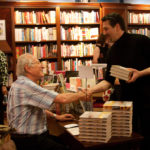5 Tips To Write A Bestseller
1 Identify A Loyal Fan Base
Select a large audience you can identify and reach online (fan fiction, movies fans, readers of bestselling books, players of video games) and reinvent their stories. E. L. James developed Fifty Shades of Grey from Twilight fan fiction. Dan Brown reinvented Christian conspiracy stories in Da Vinci Code.
2 Select A Successful Genre
The most successful genres are: thriller, romance, fantasy, erotica, cozy mystery, paranormal, paranormal romance, romantic subgenres, and science fiction, according to a 2016 study. Craft your story with an eye to the story structures and genre conventions of that genre. Read deeply and widely in your genre. Talk to fans so you know what’s going on in the genre.
3 Create Compelling Men And Women Characters
Write compelling male and female characters. Create for them lots of different kinds of conflict and resolution. Give them a mix of personal strengths and weaknesses. Mix up their social backgrounds. Create an equal balance between male and female characters. Unless you know otherwise, assume women make up a large portion of your readers.
4 Vital To Your Novel: Three Surprises
A “surprise” is an especially dramatic twist or turn in your story. A good novel needs at least three of them. We explain how to create these surprises and exactly where to place them in your story. Be like George R. R. Martin of Game Of Thrones, the master of the surprise, especially when it comes to killing off main characters.
5 Fast-Paced Emotional Story
The storytelling DNA of bestsellers includes a fast-moving plot. In the Marshall Plan® novel writing system, there are basic two plot units in this storytelling DNA: the action section and the reaction section. The action section is where things happen. Someone does something, goes somewhere, says something. The reaction section is where someone reacts to what just happened. This is where most of your lead character’s emotional turmoil occurs. Many novelists don’t make the most of the reaction section. Find out how to use the reaction section more effectively to add to your novel’s emotional power.
